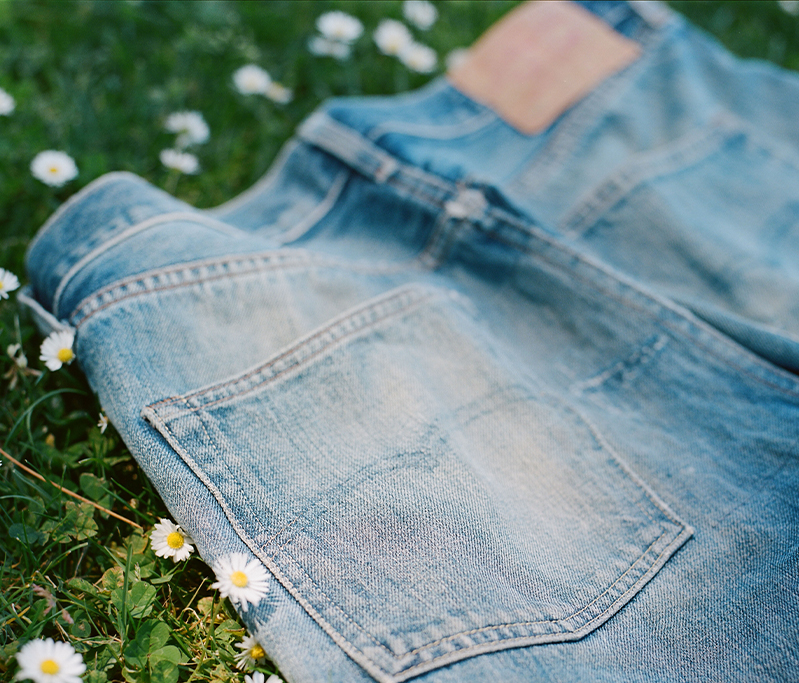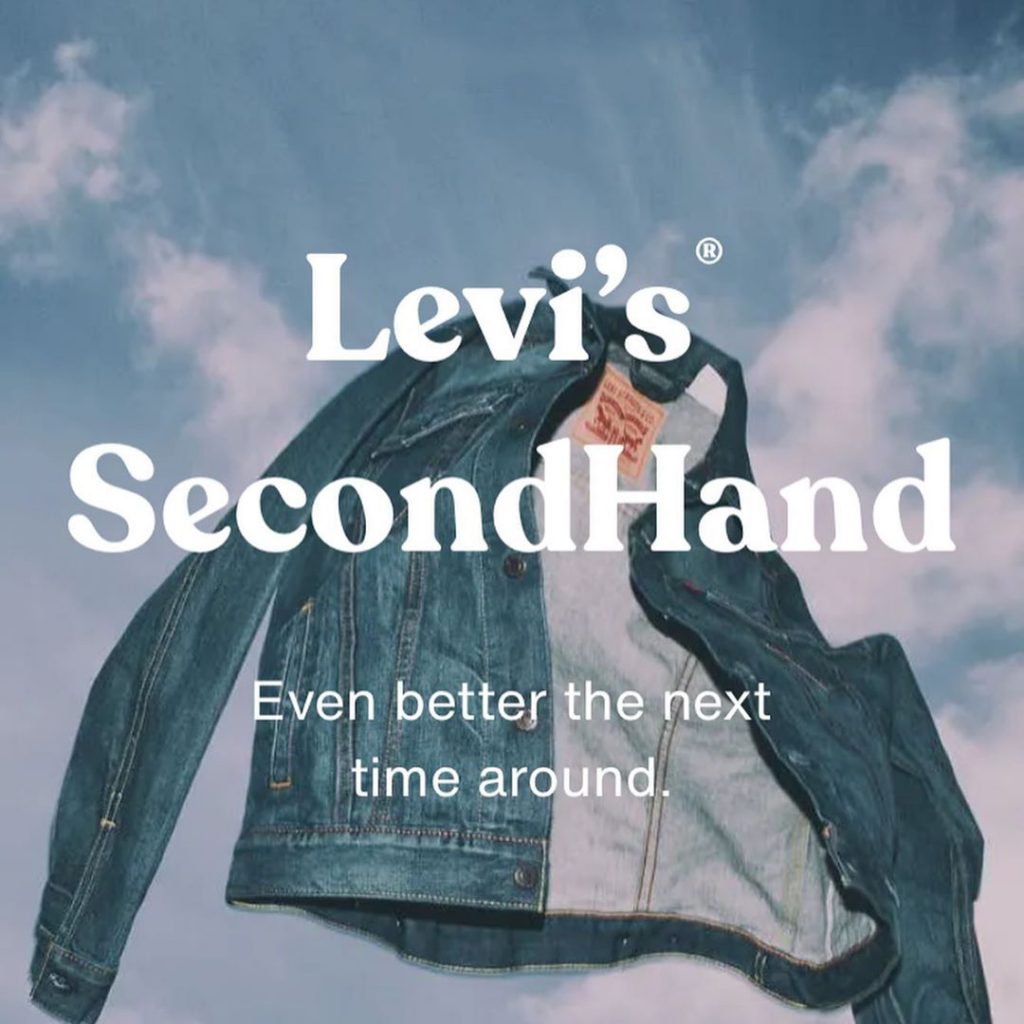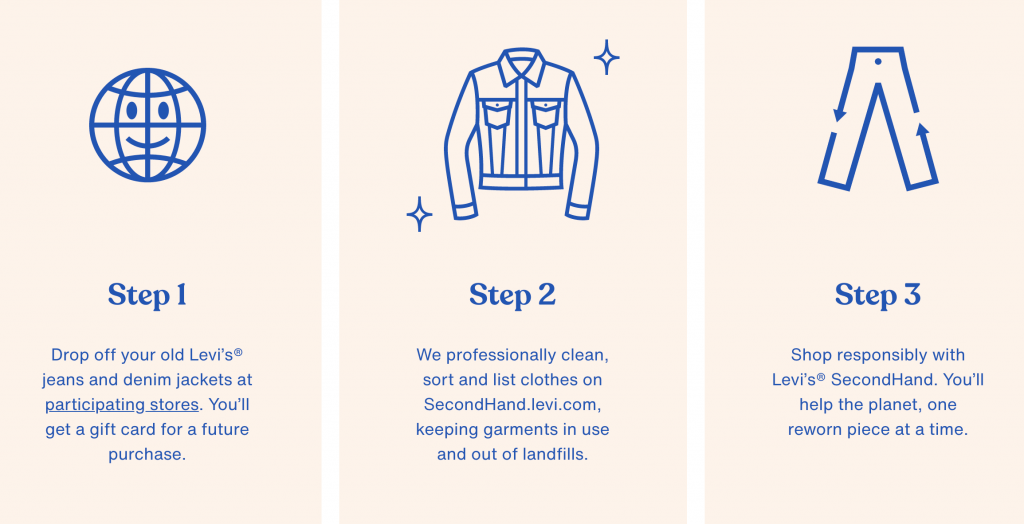
Environmental sustainability has become a big issue in these days of climate change, and the makers of manufacturers of just about everything have taken notice. Cars, washing machines, paper towels, and more are now being sold on their low impact nature. But how does the fashion industry adapt to this? We’ve seen the rise of brands small and large touting their manufacturing processes or promoting their items made with recycled fabric. However, one of the more interesting, and perhaps most environmentally helpful, has been the rise of brands getting into their own used clothing markets. Levi’s Secondhand is the latest high profile example.
Clothing manufacturing is one of the biggest polluting industries on the planet, so any move to improve any part of the process is welcome. From dye runoff to pesticides, any brand touting improvements to any part of their supply line is a net good. But one of the bigger issues is textile waste, unrecycled clothing gumming up landfills, the net tonnage of which has been growing exponentially due to the rise of fast fashion.
One way to fix that problem is by making stuff out of the old materials, either recycling or upcycling. Classic examples include the Japanese boro cloth craft. Upcycling is also enjoying a fashion moment with brands such as Greg Lauren, Maharishi, Bode, and Kiriko employing old materials to make high fashion pieces. This is great and all, but a little outside the casual buyer’s budget. Therefore, it only affects the high-end market, as opposed to the broader consumer base.


The other, significantly less fun way is simply consuming fewer new things (i.e., visiting a thrift store instead of a department store). But that isn’t in the best interest of labels’ profits, nor is it inherently convenient for consumers looking for particular items, so a few forward-thinking brands have tried out cornering their own resale market. Plus, they actually sell the items at a discount, as would befit used clothing, trying to promote them not just as friendly to the planet but to your wallet, an added bonus in these leaner Covid times.
Taylor Stitch, on the smaller side, has offered a buyback and repair program for old clothes of theirs and then sells them on their ReStitch label. Patagonia, the outdoor company often on the vanguard of environmental matters, has its own secondhand market in their Worn Wear store. It helps that these are brands known for making hearty clothing known to last. But perhaps the most interesting new approach comes from denim masters Levi’s.
Levi’s is a huge company and one of the highest-profile examples of a brand getting into selling its own used goods in its SecondHand store, but it’s how they market and organize it that makes it interesting. In addition to its budget and environmental friendliness, Levi’s also touts the items’ vintage status and allows you to browse things like you would on their new item store, sifting through the items by model name and number. Rather than let others corner the game on coveted vintage 501s, Levi’s is claiming its own history in an easy-to-use webstore.
Reducing one’s carbon footprint is difficult, and it isn’t supposed to be fun. Mindfulness rarely is. But what Levi’s and others are innovating is how to make environmental friendliness more prevalent among everyday consumers and more akin to the new clothing shopping experience. It’s a spoonful of retail fun to make the medicine go down easier. Granted, a lot of that textile waste has been coming from fast fashion brands whose flimsy items may not make it resale, but any help is good for abating climate change. Brands such as Levi’s, Patagonia, and others take a novel approach to help you help the planet.







